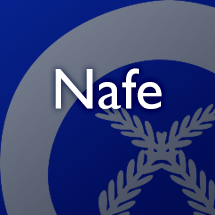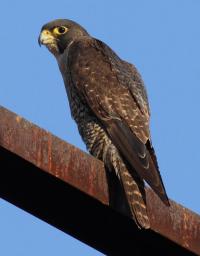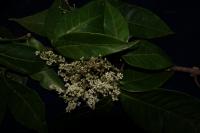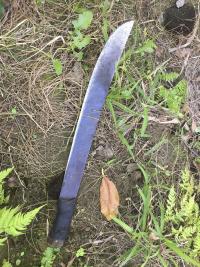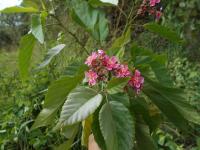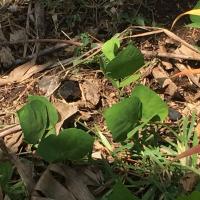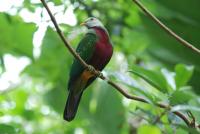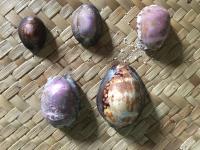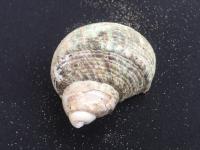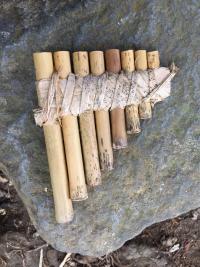An example search has returned 100 entries
-akeki
v scrape out, spoon out
bookmarkia-kesi nukuaii-nahii
karorɨt
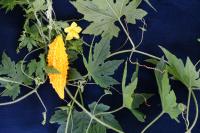
konianaker

Orange-spotted grouper (deep sea)
Example: Photo by Ian Shaw / iNaturalist.org, License: CC BY-NC 3.0 via Fishes of Australia
bookmarkkoniere
konuwak arwerew
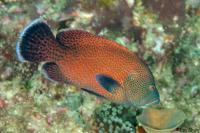
Tomato hind, tomato grouper (deep sea)
Example: Photo by Ian V. Shaw / ALA, License: CC BY-SA 3.0 via Fishes of Australia
bookmarkkonuwak sarapiran
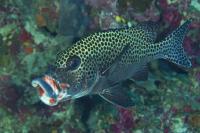
Harlequin Sweetlips, Many-Spotted Sweetlips, Spotted Sweetlips (female)
Example: Photo by Mark Rosenstein / iNaturalist.org, License: CC BY-SA 3.0 via Fishes of Australia
bookmarkkuanasenash

n. type of flowering plant (collection: Michael J. Balick #5166)
Example: For the kastom ceremonies, this can provide the face paint color yellow. Cut open the ripe fruit and paint directly with this. Prior to artificial colors, people used this for yellow and Bixa orellana for red to paint faces and skin.
bookmarkkwanapit
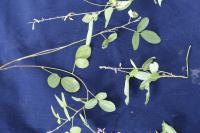
n. herb to 50 cm, flowers pink (collection: Michael J. Balick #4721)
Example: This plant is used to treat diarrhea. A person takes 1 handful of leaves, washes the soil off, chews them and gets the juice out of the leaves, spits out the fibers and left over parts of the leaves. Chew this regularly until the diarrhea goes away if a person has a bad case; for a mild case, chew only once. It is said that a person has to "listen to the plant" until the diarrhea stops. It is said to be better for this condition than Psidium (guava).
bookmarkkwankumaha
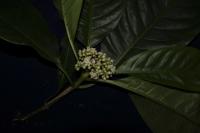
mahk ~ mak

[the spelling "mahk" was transcribed by Goerg Forster on Capitain Cook’s 1774 visit t] Tanna ground dove (extinct species)
bookmarkmakhum
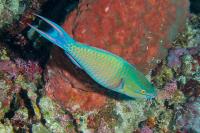
Tricolour parrotfish
Example: Photo by Bernard Dupont / Flickr, License: CC BY-NC-SA 3.0 via Fishes of Australia
bookmarkmarao

Lattice soldierfish, violet soldierfish
Example: Photo by Jeffrey T. Williams / Smithsonian Institution, License: CC BY-SA 3.0 via Fishes of Australia
bookmarkmarpan

Carolines parrotfish, stareye parrotfish
Example: Photo by Dennis Polack / FishWise Professional, License: CC BY-NC-SA 3.0 via Fishes of Australia
bookmarknamatamai
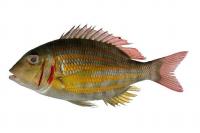
Ornate emperor
Example: Photo by Digital Archives of Taiwan / via catalog.digitalarchi License: CC BY-SA 3.0 via Fishes of Australia
bookmarknamramiri

[namrami:ri] n. tree, 3 m tall (collection: Gregory M. Plunkett #3001)
Example: Fuel: Dry portions of this plant are used as firewood. Construction: The timber of this plant is used to create any part of a house. It is considered a strong wood. Hunting: Pidgeons are attracted to this plant for their fruit. As a result, hunters gather around this plant when they desire to hunt the pidgeon.
bookmarknangai
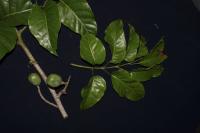
[naŋe] n. tree, 6 m tall (collection: Gregory M. Plunkett #3141)
Example: Fruits have edible seeds. To prepare, sun dry the fruits, break kernal and roast or boil the nut inside. Is a common food plant. The wood makes good timber. The latex can be collected, put in a tin and then heated over a fire. It turns black and can be used as black paint. It also smells nice when heated.
bookmarknapuei mia
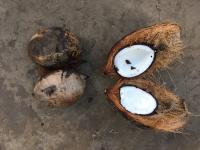
narparerep
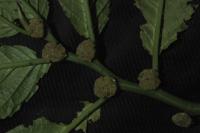
n. terrestrial herb, 0.5 to 1 m tall (collection: Gregory M. Plunkett #3028)
Example: Ecological: This plant, which grows near streams, is known to hold water during the dry season. If the plant is harvested, then it is known that the stream will not continue to run. Thus, precaution is taken to keep this plant in good health.
bookmarknaruakiri

[naruwakiri] n. herb, 2.5 m tall (collection: Gregory M. Plunkett #3082)
Example: To make a strap to hold the ornamental fiber "Nisei" (Plunkett et al #3077) on a person’s arm. Dry the stem, remove the fibers, and weakve into a strap. There is a legend that is told about this plant, concerning a rat and a fox. The rat and fox stole a banana from the Devil’s garden. The Devil caught the fox and told him not to come back. The rat said "lets go to the garden" and the fox said no. The rat said "go take these leaves, and tie the leaves with coconut fiber--and he told the fox to lie down and the rat sewed the leaves on the fox. ...
bookmarknatey
natukian
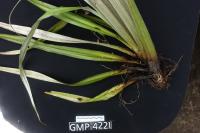
nekaferang
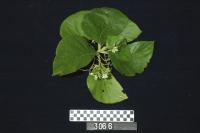
n. epiphyte growing on cyathea trunk, growing along garden trail. (collection: Gregory M. Plunkett #3066)
Example: This plant is used to reduce the pain of toothache. Take the stem and peel it, remove the bark and place the bark against a sore tooth. Keep it is place, until the person feels better. Can use this treatment 2-3 times. It is said to "take the pain away." The tooth may rot away naturally, but this is good for the pain that accompanies toothache. The dried fruits and seeds of the plant can be mixed with pig food, such as coconut, and when the female pigs eat it, they will not have piglets. This is said to be used when a person has too many pigs.
bookmarknemrapoep
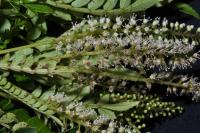
nepikesy
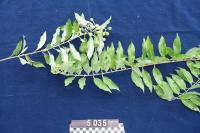
n. type of flowering plant (collection: Michael J. Balick #5035)
Example: Root is sold to earn money, as perfume and oil is from this. Grandparents used to dry the wood over a cooking fire in a kitchen when a person would get the flu. To help, they’d take dried and heated wood, scrape one cup’s worth into hot water, and then breathe over the steam bath. Drink water afterwards. Do thhis once a day for three days.
bookmarknewar

nuamera
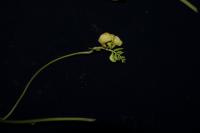
n. vine on pipturus tree, growing at edge between forest and garden of sweet potato and taro. (collection: Gregory M. Plunkett #3147)
Example: This is used as a medicine to treat babies and children with fever. Take 1 handful of leaves and squeeze the "juice" from them into a cup, add a small amount of water, just enough to dilute the strong taste of the leaf liquid. Drink 3 or 4 times a day until fever is reduced. This liquid is also good for people who have done heavy work or who are old, as it is said to strengthen the veins. So, if a person is feeling week, they can drink a few cups of this preparation. The name "Nuamera" refers to "live veins," meaning that it will make your veins come alive and bec
bookmarknɨmu kwatia tasiapen
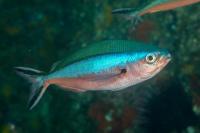
Dark-Banded Fusilier, Neon Fusilier
Example: Photo by Ian Shaw / iNaturalist.org, License: CC BY-NC 3.0 via Fishes of Australia
bookmarkpenesu

Rivulated parrotfish, surf parrotfish
Example: Photo by Rick Stuart-Smith / Reef Life Survey, License: CC BY 3.0 via Fishes of Australia
bookmarksadine sadine
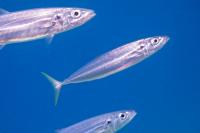
Mackerel scad
Example: Photo by David R / iNaturalist.org, License: CC BY-NC-SA 3.0 via Fishes of Australia
bookmarktamuni
terag
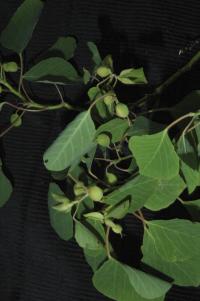
tikinau hasori
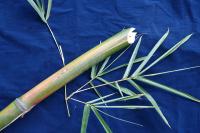
turaimien
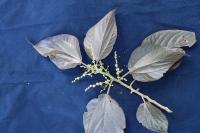
n. type of flowering plant (collection: Michael J. Balick #5121)
Example: Peel stem and chop pieces of stem and pieces of stem of Nothocnide repanda (MB 5122), add fresh water, squeeze in hair, rub head in one direction, do this for one month then hair will turn blond color (for Toka dance) and will also help dreadlocks.
bookmark